Lilies or its scientific name Lilium, are known for their large, flamboyant and dazzling flowers with a strong and intoxicating but sweet scent. They come in striking shapes and colors that are contrasting and attractive.
Lilies are easy to grow and care for and add a wonderful appeal to your garden. Lilies can make an ideal cut flower too, which makes it more popular to date.

Fall in love with these 15 types of vibrant and summery yellow lilies that would make any garden more attractive and beautiful.
Table of Contents
Types of Yellow Lilies
1. Citronella – Asiatic Lily
Citronella are downward facing, golden-yellow lilies which are spotted and have recurved tips. When these bulbs mature, they can produce up to 20 blossoms per stem. These blooms are attractive to hummingbirds.
They are not very particular about soils as long as they are well-drained. Plant these lilies in the fall or early spring so they will bloom beautifully in early to mid-summer in your garden.
2. Grand Cru – Asiatic Lily
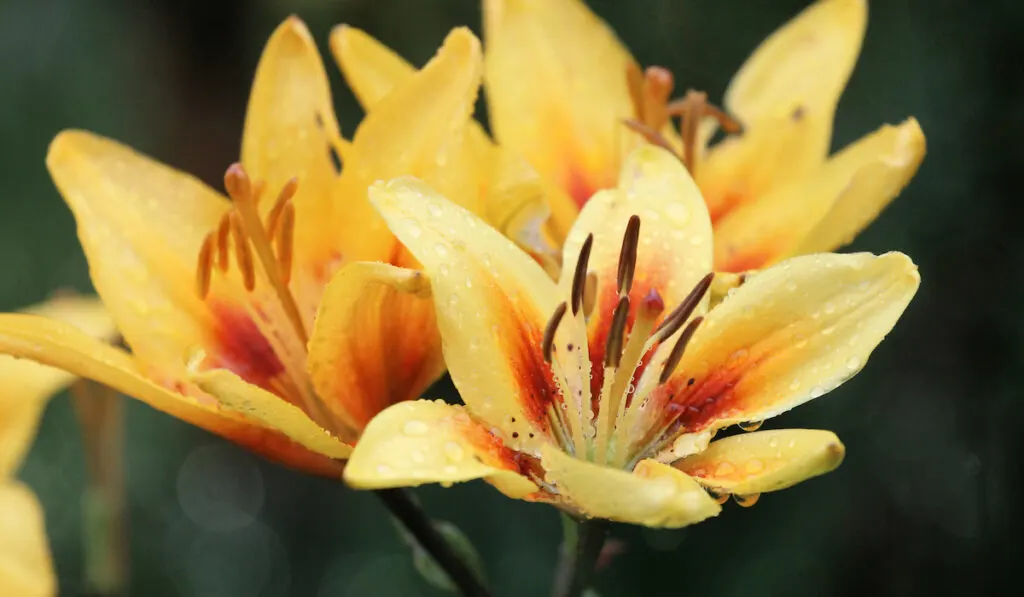
These lilies are very pretty and decorative. They are easy to grow and make very good border plants and cut flowers.
They bloom in early to mid-summer and have bright yellow petals with hints of burgundy at the center and dark-colored anthers.
The anthers compliment the red markings and the brightness of the yellow making it a truly remarkable flower.
3. King Pete – Asiatic Lily
This type of lily grows up to 3 feet tall and has an upward facing and wide-open characteristic. They have these bright yellow petals blending to orange in the center with a flicker of brown freckles.
They are long-lasting flowers that are perfect as a cut flower. These are good to plant in flower beds, borders, patios and containers.
4. Salmon Twinkle – Asiatic Lily
A great garden feature, Salmon Twinkle lilies are wide-open and decorative flowers. They have a soft, pastel color with pale creamy yellow petals and light pink to lavender recurved tips.
They have high leafy stems that have an intoxicating fragrance.
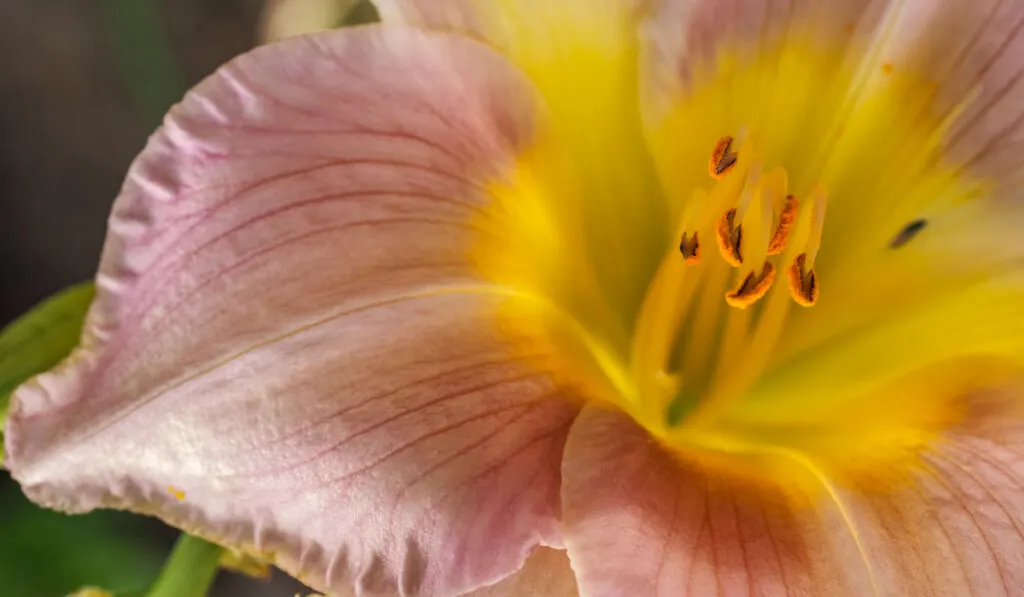
5. Black Spider – Asiatic Lily
This is a popular cut flower that has round-edged creamy white to yellow colored petals with dark plum spots on the center. These tall plants can grow up to 3 feet in height.
During summer is when the blooming is at its peak. It is a wonderful addition to your garden as it complements and blends well with other plants.
6. Brushstroke – Asiatic Lily
Brushstroke lilies produce up-facing flowers that have yellowish white colored petals. It has a plum brushstroke-like pattern on the petals.
They are large, showy flowers that bloom during the periods of late spring to early summer. This can be an excellent cut flower. If using containers, the pots need to have excellent drainage.
7. Connecticut King – Asiatic Lily
These flowers are bright yellow with a hint of orange in the center. Charming and dainty, they come in clusters and are perfect for that summer time garden feature. They are low in maintenance and they lack spotting on the petals.
They are star shaped, unscented with glossy leaves and require full sun exposure and adequate moisture when flowering but can be tolerant in periods of drought.
8. Last Dance – Asiatic Lily
These types of lilies are down-facing flowers that are light and airy and dance in the wind. It has lemony-yellow petals that are slightly curved outwards with narrow green leaves. It attracts bees, butterflies and hummingbirds.
This flower only requires minimal care and is tolerant in the heat. When planting individual plants, there should be a gap of about 14 inches apart when planting in masses or if used as a bedding plant.
Staking is required since this type of lily can be leggy and its stem weak. This is definitely essential when these lilies are planted in places with rich soil or exposed areas.
9. Canada Lily – American Lily
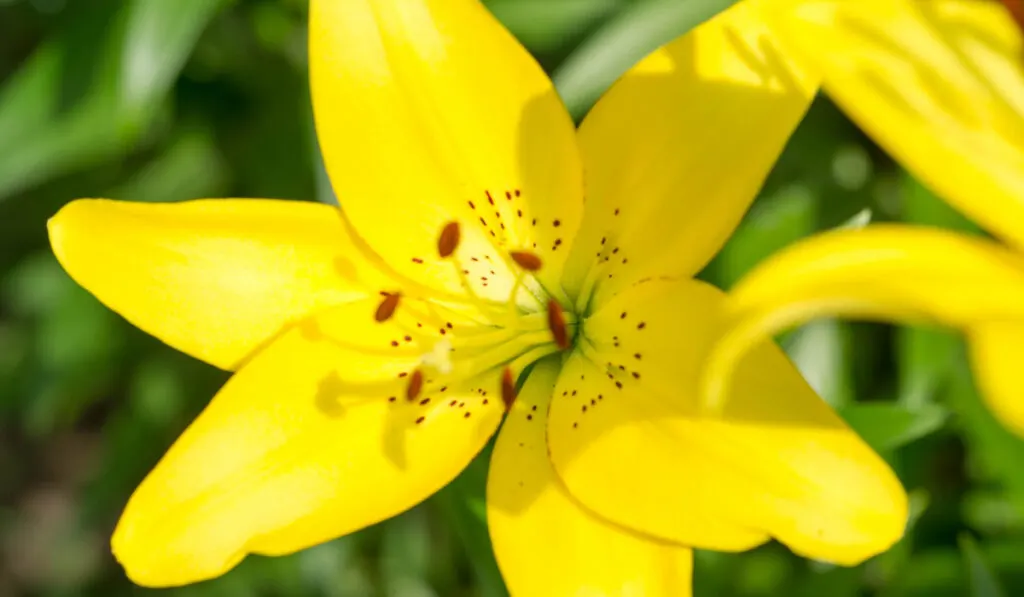
Also known as the Meadow Lily or Wide Yellow-Lily, they can be found in the Eastern Part of North America and often found in meadows.
They bloom in June and July and grow in zones 3 to 9.
They are tall plants growing up to 3 to 8 feet tall. These hanging yellow blooms have pointed tips and have orange-brown speckles that have a dainty and elegant look with no fragrance.
10. Goldsmith – Trumpet Lily
Its golden yellow flowers are a perfect inclusion to gardens and flower arrangements. A very fragrant flower that will fill your garden with an intoxicating aroma, Goldsmith lilies grow at approximately 4 to 5 feet and bloom in early July.
11. Golden Splendor – Trumpet Lily
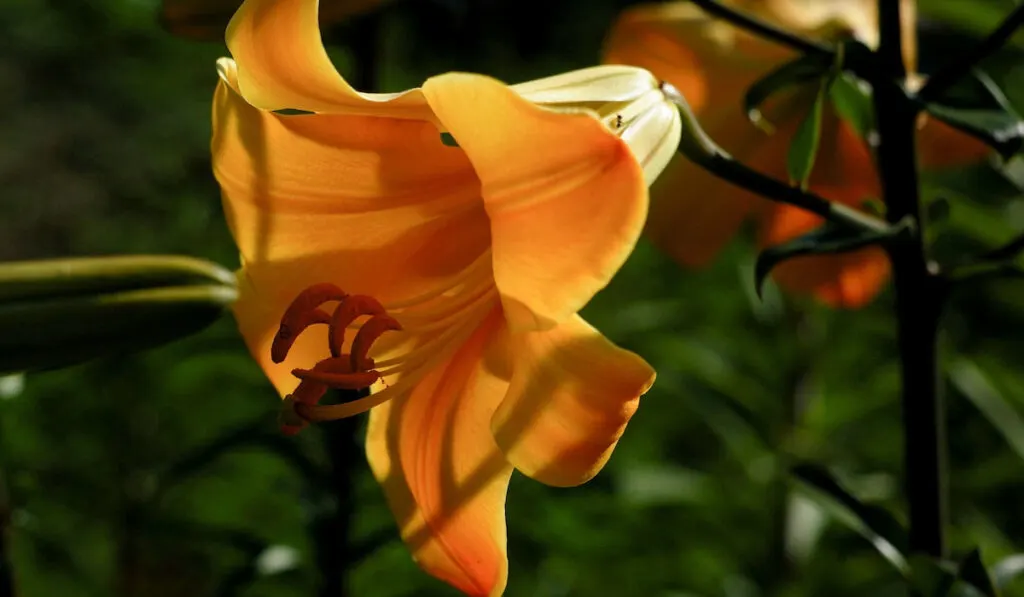
Golden Splendor lilies are bright and showy flowers with vibrant golden yellow petals that are curled at the tips. It is trumpet-shaped and its underside has a tint of maroon and green.
This can grow up to 6 feet tall and usually has clusters of 12-20 flowers per stem.
Golden Splendor lilies are more tolerant of droughts than most of the variety of lilies.
It has a delectable fragrance and is well suited to containers, as a border plant or cut flowers. Plant it in spring or fall in clusters of 3 bulbs or more for that delightful appeal in the summer.
12. Belladonna – Orienpet Lily
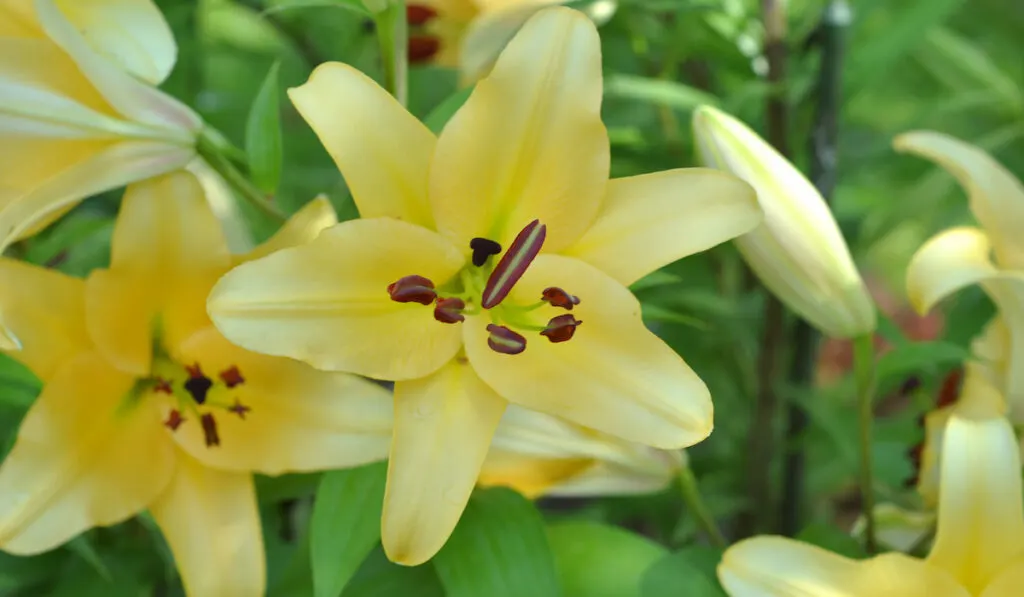
These stunning Belladonna lilies love to grow in full sun. They grow up to 4 inches tall and 7 inches wide. Plant them in spring or fall in clusters of 3 bulbs or more for it to bloom wonderfully by mid to late summer.
They have beautiful golden-yellow flowers with large bowl-shaped blossoms. Orientpet hybrids are a combination of Oriental and Trumpet lilies.
13. Deliana – Longiflorum Lily
Deliana lilies are hybridized from the Eastern lily and bloom in summer.
They are fragrant with wide, trumpet-shaped yellow petals with flecks of green. Its dark green leaves give a wonderful contrast to the stunning yellow flowers.
14. Leichtlin’s Lily
This lily is native to Japan and has a rich golden yellow color which faces downward. They have brown-colored speckles on the petals and have a slender stem and long, narrow leaves.
Plant in spring or fall to get the best blooms by early to mid-summer. It is best to group the bulbs into 3 or more when planting to get a decorative show during the blooming season.
15. Caucasian Lily
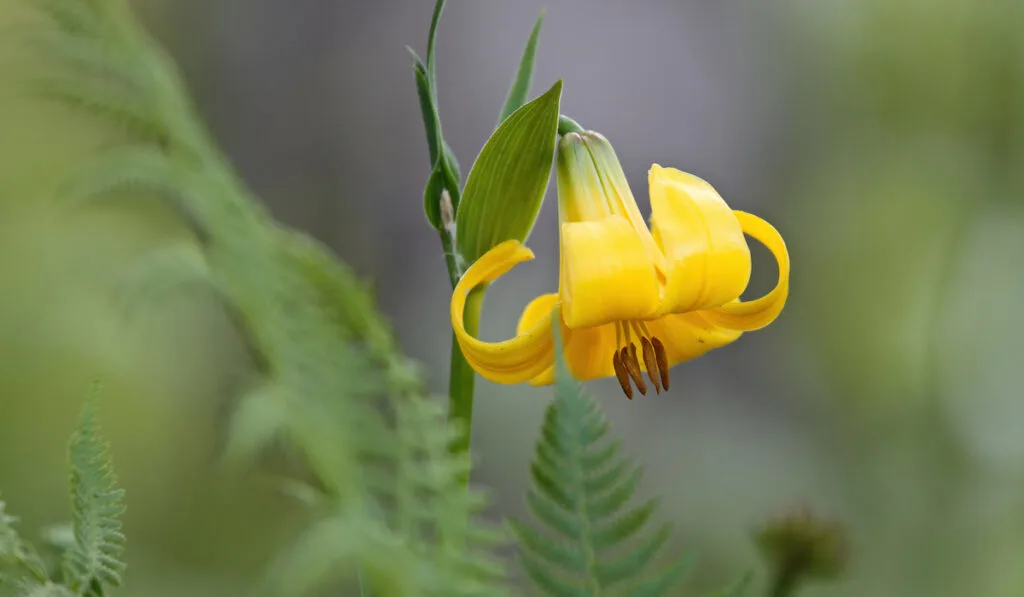
Caucasian lilies are large, yellow drooping flowers with red freckles that are fragrant. They are native to Crimea and to the south and north of Caucasus.
They have long and strong stems which hold up to 20 blossoms.
When to Plant Lilies
It is best to plant the lilies in spring or fall before the ground freezes.
This is essential so that the lilies will be able to put down strong roots. Lilies usually bloom from early summer to fall depending on the variety.
Where to Plant Lilies
Plant the lilies in a garden soil that has good drainage as lilies rot when they become too soggy. Lilies require good moisture to thrive and so it is important to plant them in a well-drained soil.
Standing water and dry soils should definitely be avoided. Lilies should be planted within shorter flowers that can help support the lilies. These flowers can grow really high from two to ten feet tall so they will need ample support.
Place them in an area where there is access to full sun, giving them at least 6 to 8 hours of direct sun everyday as these flowers thrive in the sunlight.
How to Plant Lilies
Loosen the soil and dig a hole of about 6 to 12 inches deep. Set the lily bulbs in with the roots facing downwards. Put at least 3 to 5 bulbs in one hole of 6 inch diameter.
Cover the lily bulbs with soil and water. Place them in a distance of at least 8 to 18 inches or 3 times the diameter of the bulb to give them good enough space to bloom.
How to Care for Lilies
Lilies don’t require too much attention and care. If they become dry in the spring and early summer, water them regularly during the day. Keep the lilies moist during winter.
To help retain the moisture and control the weeds, it is good to put a thin layer of compost and mulch in the spring. When you start seeing the blooms, you can give your flowers a balanced liquid fertilizer.
You can remove flowers that have faded but keep the leaves intact until they naturally drop on their own as the foliage is needed for the plant to make food for the next bloom.
